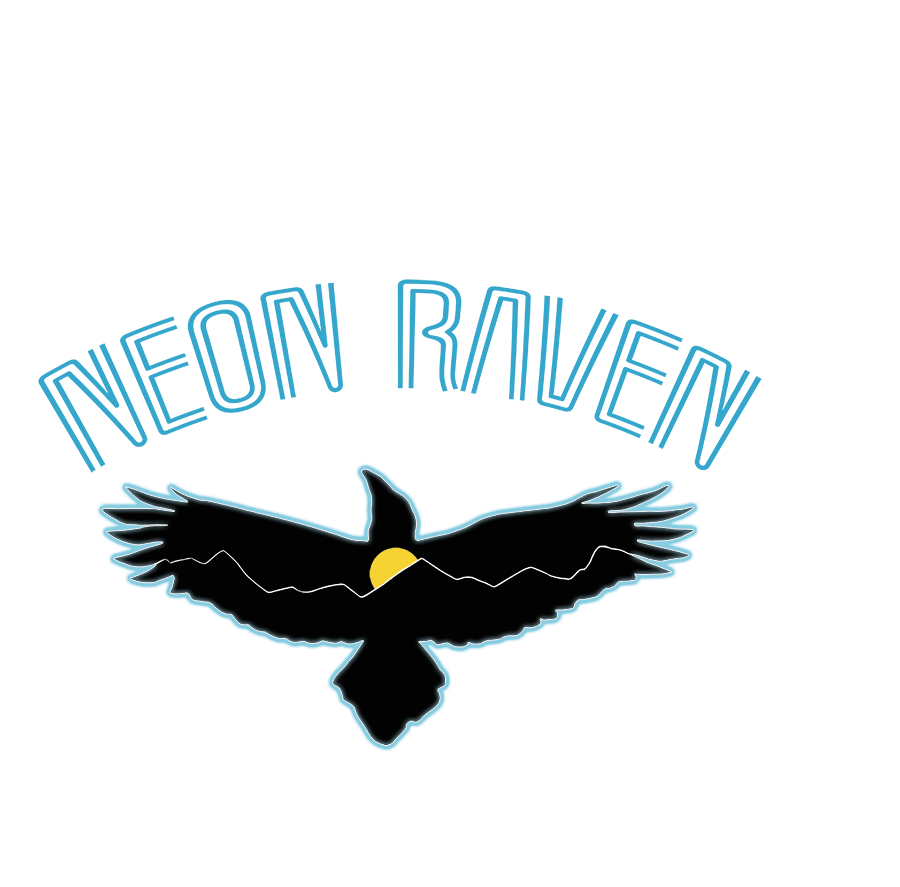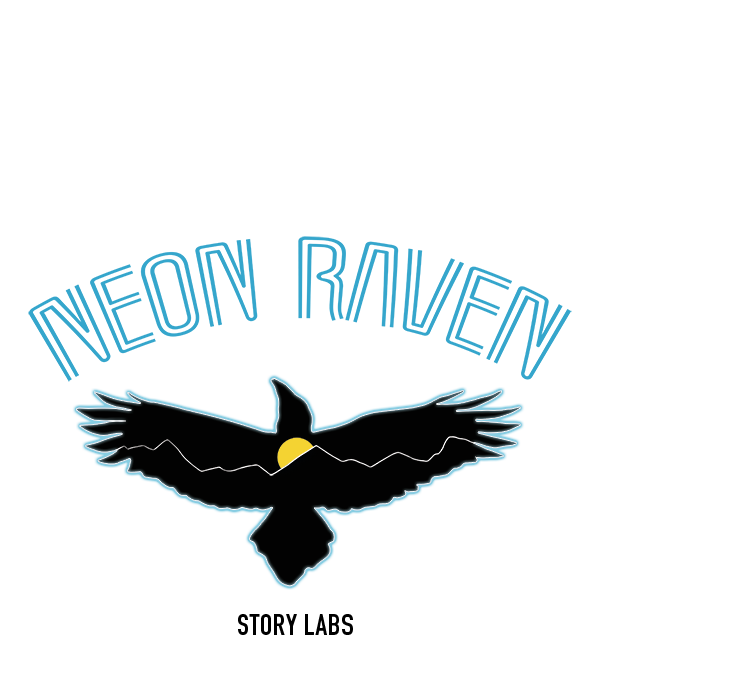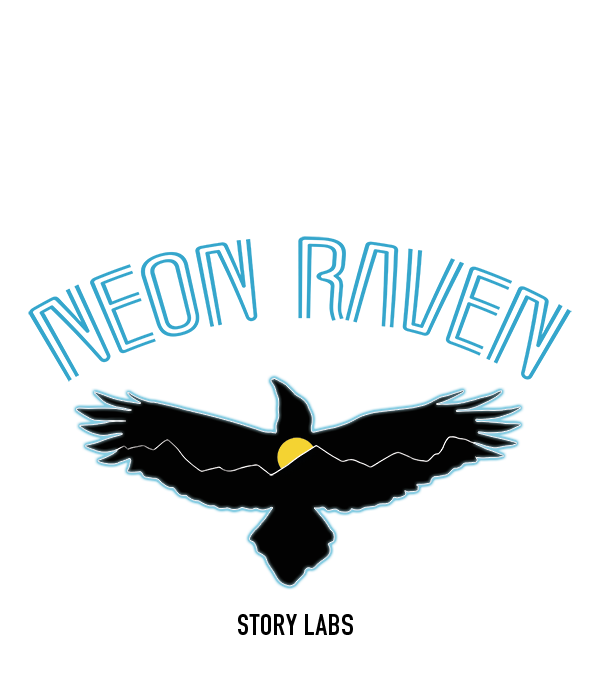In cultures around the world, ravens have been the keeper of knowledge, whisperer to the gods, central figures in creation stories. They keep us on our toes. In life, these smarty-pants are puzzle-solvers, gregarious, and one of the few animals outside of humans to demonstrate memory (they hold grudges, but they’ll also remember if you’re nice). Listen to their deep-throated repertoire of calls and you can’t help but wonder what plans they are hatching. They are my neighbors, hopping the city streets and giving me side-eye as I walk the dog at the beach. If i’ve ever met an animal that studies, it’s the raven.
Neon Raven is a modern twist on this creature of legend, our guide for bridging the wild and human worlds at home in both the most rugged landscapes and busy city streets.

Not too long ago, a journalist interviewed me about a new film called Deer 139. The film follows three women, one of which is a scientist, as they follow a single. pregnant mule deer on her 89-mile migration. The humans come with swear words and granny panties. The deer is by far the most graceful of the bunch. Partway into things, the interviewer asked how we came up with our approach, “It wasn’t like your typical environmental film,” she said. “It was a lot more fuh…I mean it’s less…”
With each attempt, she tried to reel back the potential affront. “It’s kind of fun hearing you try not to say conservation films are boring” I said.
She began to laugh. “Well this one’s just more fun than usual.”
With those words, I felt like our team had done its job. This was the very reason for which Neon Raven existed. We wanted the stories to live up to the realities of conservation.
The species, people and places at the center of these stories face great sacrifice, large stakes, seemingly insurmountable obstacles and reveal broader lessons about our lives and the role of human beings on our planet. They also don’t always have to take themselves so seriously.
Conservation encompasses some of the most meaningful, compelling and engaging stories. People put their lives at risk to fight for and study these subjects. They take time away from their families, or move their families into the heart of things, sometimes conflict zones. People are put at risk by the changes inflicted by pollution or environmental destruction. They experience discomfort and doubt that the wildest imagination could not devise, but they also find their strength and their voices as they respond to a calling.
Conservation is as dynamic as any top-rated drama on Netflix. But far too often these stories come across like an infomercial.
I formed Neon Raven out of a love for the stories of conservation. I want the films and photo stories to reflect what it’s really like for the people and wildlife affected by conservation issues. Neon Raven seeks to find the value in conservation and share that with the world.
As humans, we may not agree on everything, but we can appreciate certain values. Parents want safe water for their children. Most of us could understand the fear if faced with a loss of livelihood, whether that’s a life spent studying a species on the verge of extinction, or a farmer trying to grow their crop. It’s in these values where we can find common ground beyond the choir.
I like to call this idea the fostering of habitual empathy. At Neon Raven we firmly believe that if more people put themselves in the shoes, paw prints, tarsi (bug feet) and wingbeats of others, the world might be a kinder place. Habitual empathy has the power to change the world for the better.
At Neon Raven our stories may be informed by science, or even about science, but they are also about the moments in between. The lives intertwined with environmental issues, whether you’re a rancher, a city-dweller, a religious conservative or a “snowflake.” We want conservation put into context and for people to feel connected.
We will always pursue truth and accuracy with our projects, and we will endeavor to do it in a way that makes you (temporarily at least) forget about that viral cat video, unless of course it’s a cat video about endangered fishing cats.
followers on instagram
percent instagram engagement rate
films completed last year
Creativity Behind The
CAMERA

MO’S STORY
FOUNDER/OWNER
Morgan (Mo) Heim is a Senior Fellow with the International League of Conservation Photographers who holds degrees in Zoology (BS) and Environmental Journalism (MA). She has worked on two National Geographic granted projects, one on urban coyotes, and the other for the feature film Deer 139, following the migration of a single, pregnant mule deer across Wyoming. Her photos and writing appear in outlets, such as BBC Wildlife, Smithsonian, Nature Conservancy, World Wildlife Magazine, Newsweek and Playboy. Her film collaborations have appeared in Banff Mountain Film Festival, Adventure Film, Telluride and the International Wildlife Film Festival. In 2016, The Snow Guardian, (which she made while a Producer at Day’s Edge Productions), received second place in the Film4Climate Competition in associate with COP22 and has since gone viral with over 10 million views on National Geographic.
She’s been honored in both the Wildlife Photographer of the Year (2018) and Big Picture Natural World Photo Competition (2015 and 2018) for conservation photojournalism, as well a recipient of multiple grants (Philip Hyde and Fund for Environmental Journalism).
When not on assignment, she likes to spend time hiking with her dog and husband in the wilds of Oregon, is an avid gamer, and loves cooking elaborate meals while listening to music and enjoying the occasional nip of whiskey.
See more of her work on her personal channels:
IG: @moheim
Web: morganheim.com

HER PALS
POWERS COMBINED
Sometime projects call for more than one storyteller. Pictured here, you see Jenny Nichols (Pongo Media Productions, conservation filmmaker) and Krista Schlyer (iLCP Senior Fellow, writer and photojournalist). Neon Raven calls on them, and other ladies and gents like them, when the right project presents itself. Conservation storytelling is not a solitary endeavor. You need the right people to get the job done. All of my partners are people I trust, who have proven themselves over and over again in terms of their quality storytelling and genuine consideration for thoughtful conservation. We partner on story projects, campaigns, workshops and other skills development. Among my cohorts you can find, other photographers, writers, filmmakers, animators, musicians, sound engineers, the list goes on. Many of them have backgrounds in science, or policy, social justice, law or marketing as well as their artistic skills.
Some of those partners are my fellow fellows with an organization called the International League of Conservation Photographers, as well as many talented independent trailblazers in conservation media, like Jaymi Heimbuch at Jaymi Heimbuch Photography and Chris Steppig with the Summit Workshops. Rest assured when approaching Neon Raven on a package project, everyone brought on board treats this as a calling.
Basically, I like to think Neon Raven is like the Captain Planet of conservation storytelling.


journey starts here


friends and partners





